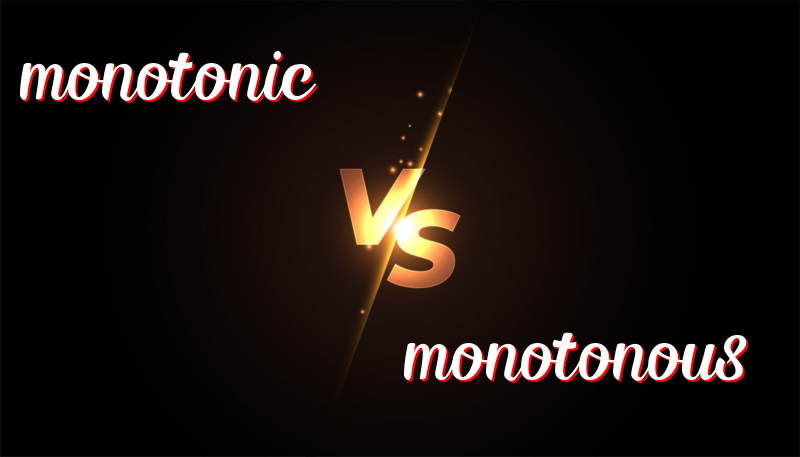Understanding the Difference Between Monotonic and Monotonous
Understanding the Words: Monotonic vs. Monotonous
Even though they look alike, “monotonic” and “monotonous” mean different things. Let’s learn about their history, how to use them, and some tricks to remember the difference.
History
Monotonic: This word comes from “mono” meaning “one” and “tonic” related to “tone.” It is often used in math and science to describe something that keeps the same pattern.
Monotonous: This word also starts with “mono,” meaning “one,” and “tonous” comes from “tone.” It describes something that is boring because it doesn’t change.
How to Use Them
Monotonic
- In math, a monotonic function is either always going up or always going down.
- The melody of the song was monotonic, staying on the same notes.
- A child might speak in a monotonic voice when they are not excited.
- The weather was monotonic, with no change from sun to rain.
- They kept a monotonic routine every day, doing the same things at the same time.
Monotonous
- The teacher’s lecture was monotonous, making the students sleepy.
- The paint color was monotonous, with no other colors mixed in.
- Listening to the same music on repeat can be monotonous.
- The long road through the desert was monotonous, with no turns or hills.
- Doing the same exercise every day can become monotonous.
Trick to Remember the Difference
Think of “monotonic” like a math term. It describes something moving in one direction without change.
Think of “monotonous” as “boring.” If something is too plain or doesn’t change, it is monotonous.
Summary
To sum up, use “monotonic” when talking about something that keeps a steady pattern, usually in math or science. Use “monotonous” when describing something that is dull or boring because it doesn’t change.

Leave a Reply
You must be logged in to post a comment.